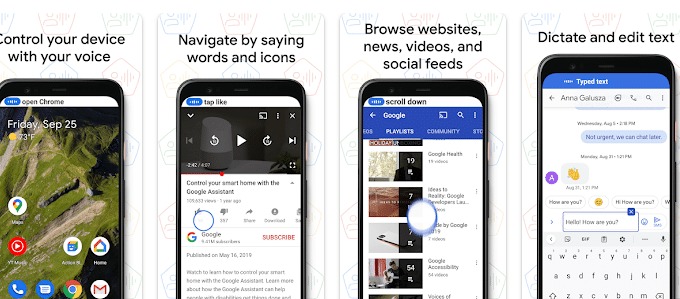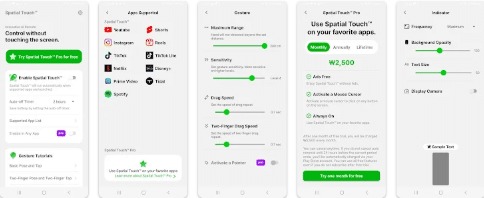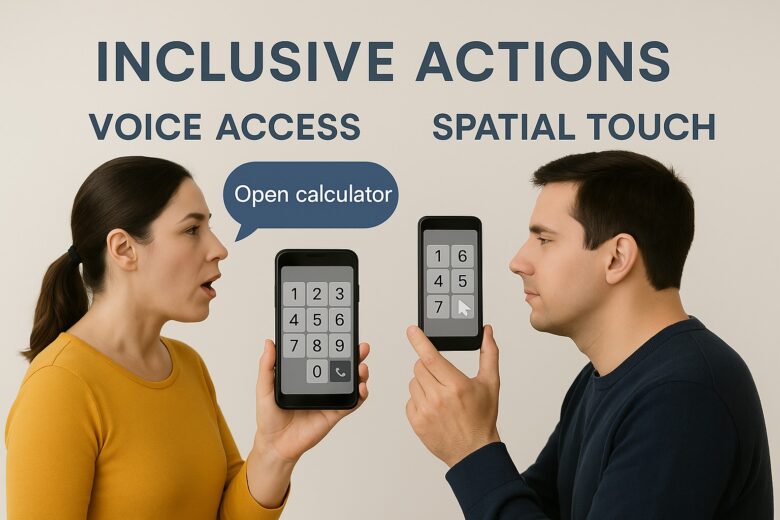Digital accessibility is no longer an extra, it’s a necessity. In a world where mobile devices are present in almost every aspect of daily life, it’s essential that everyone, regardless of their physical abilities, can interact with technology without barriers. Apps like Voice Access and Spatial Touch are marking a turning point in this field.
Both tools allow hands-free control of a phone, but they do so in different ways. While Voice Access relies on voice commands, Spatial Touch uses facial movement. Together, they represent a new era of mobile accessibility designed to offer independence, autonomy, and ease of use.
What is Voice Access?
Voice Access is an application developed by Google that allows you to control an Android device solely with your voice. It’s not simply a virtual assistant like Google Assistant, but a much more comprehensive solution that provides full control of your phone without having to touch the screen.

Once activated, Voice Access displays numbers over each interactive element on the screen. The user only needs to say the corresponding number for the action to be executed. For example, if the “OK” button in an application has the number 17 above it, saying “seventeen” will cause that button to be pressed. But that’s not all. You can also give commands such as “scroll down,” “go back,” “open WhatsApp,” “write message,” among many others.
Text dictation is also available, allowing you to write emails, messages, or forms without having to touch the keyboard. This makes Voice Access an extremely useful tool for both simple tasks and advanced device use.
It is especially designed for people with motor disabilities, such as those with paralysis, muscular dystrophy, multiple sclerosis, or hand injuries. It’s also very useful for people recovering from surgery, or for anyone who needs to operate their phone hands-free, such as when cooking or driving.
What is Spatial Touch?
While Voice Access focuses on voice control, Spatial Touch proposes something different: controlling the device through facial movements. This app turns the phone’s front-facing camera into a sensor that detects gestures such as moving the head, raising the eyebrows, or maintaining a fixed gaze on a point on the screen to execute actions.

When you launch Spatial Touch, the app begins tracking the user’s face. Depending on the settings, it can interpret different expressions to perform functions such as clicking, navigating menus, or selecting options. For example, turning the head to the left could be used to back up, while a smile could be equivalent to confirming an action.
This approach is especially valuable for people who cannot use their hands or voice, either due to advanced neuromuscular conditions or specific situations. Spatial Touch opens the door to digital interaction for those who previously relied entirely on external assistance.
In addition to its use for people with disabilities, this technology has also sparked interest in areas such as rehabilitation, augmented reality, and research into more intuitive interfaces for the future.
Why are these apps so revolutionary?
Voice Access and Spatial Touch are more than just useful apps: they represent a different way of thinking about technology. Instead of expecting everyone to use devices the same way, these apps adapt phone use to each user’s individual abilities.
This type of accessibility not only impacts quality of life, but also social inclusion, productivity, and independence. Enabling someone to communicate, work, or entertain themselves from their phone without physical limitations makes a real difference.
Another key point is that these apps don’t require specialized hardware. They work with a simple Android phone with a camera and microphone, making them much more accessible than other solutions that require external or expensive devices.
Furthermore, in many everyday contexts, they can also be useful for people without disabilities. For example, a user can use voice commands while cooking, or control their phone with their face if their hands are full. These are solutions that adapt to the environment, not just the individual.
The future of accessibility is here.
The development of tools like Voice Access and Spatial Touch demonstrates that accessibility doesn’t have to be complicated or limited. The technology already exists. It just needs to be integrated with empathy and an inclusive approach.
These applications not only empower people with disabilities, but also redefine how we all interact with our devices. Imagining a future where talking on the phone or moving our heads to navigate is part of everyday use is no longer science fiction. It’s a reality that is being built today.
And although there is still a long way to go, it is clear that technology must continue to advance with a user-centered approach. Not just for the average user, but for all users.
Conclusion
Voice Access and Spatial Touch aren’t just technological tools; they’re concrete examples of what happens when innovation combines with empathy. They remind us that access to technology is a right, not a privilege, and that a more inclusive world begins with devices we can all use.
As more developers, companies, and governments adopt accessible solutions, apps like these will cease to be the exception and become the norm. And when that happens, it will improve the lives of not only those who face physical barriers, but also all of us.
Digital accessibility isn’t just a matter of technology. It’s a matter of dignity. And thanks to tools like Voice Access and Spatial Touch, we’re one step closer to ensuring it.



